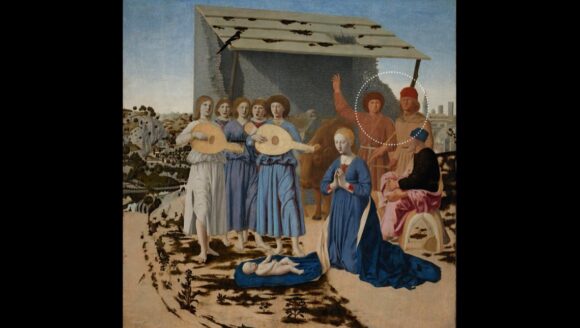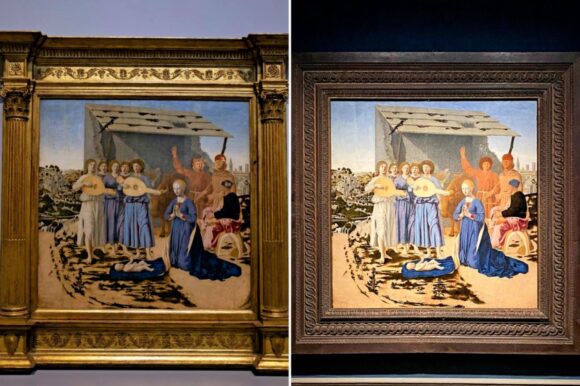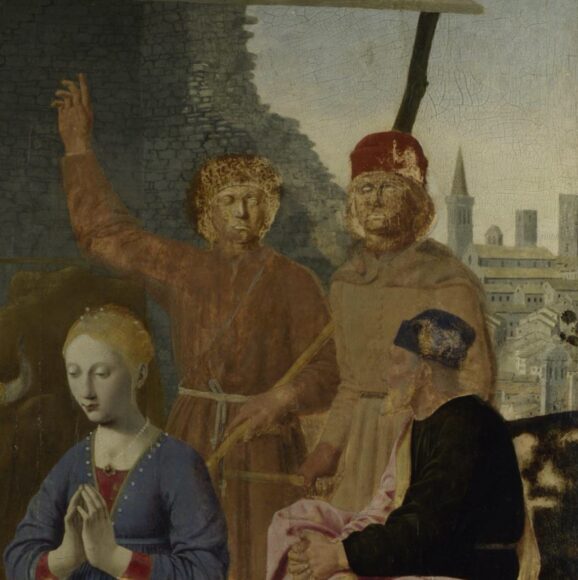
Room 17a is not one of the rooms I usually rush to when I visit the National Gallery. In the past it has been a “footnote” room, appended to the Dutch collection and filled with pretty floral still-lifes or gadgety Dutch box illusions. Pleasing, rather than crucial.
Not any more. Today, it has in it Piero della Francesca’s masterpiece of the 1480s, The Nativity: peaceful, luminous and — a big drum roll, please — freshly restored. For three years it has been under the knife. Now it’s out. That’s enough to turn even the portliest art critic into Usain Bolt. Room 17a, here I come.
Restoration has itself undergone big changes in recent years. It used to be a quiet museum duty that took place behind locked doors and about which museum types were notably secretive. Since the hugely controversial restoration of the Sistine ceiling in Rome, however, it has become something of a spectator sport. Museum directors have realised that the inevitable brouhaha that follows any big restoration provokes interest and gets people through the door.

Thus the restoration of signature artworks such as Rembrandt’s The Night Watch or Van Eyck’s Ghent altarpiece has taken place in full view of the public in specially built glass boxes that could be surrounded and gawped into. The National Gallery has not yet gone that far, but it has been noticeably noisier about its restoration efforts. The special treatment Piero’s transformed Nativity is getting — Room 17a, all to itself — is evidence of this shift in volume, as well as a must-grab opportunity to come face to face with a picture that deserves infinite attention.
In art, as everywhere else, there is no such thing as perfection, but few have come closer to the state than Piero in his Nativity. All his work is notable for its balance. Built on clear geometric foundations — he was a mathematician and a magus of perspective, as well as one of the greatest Renaissance painters — it has about it the rare sense of every brushstroke being in exactly the right place. There’s a thoughtfulness to it too, a feeling that your mind is being caressed as well as your eyes. All of which makes it especially vulnerable to that most tragic of museum end games — the restoration cock-up.
Do we have one here? No. We have the opposite: a restoration of such sensitivity and good direction that it has actively enhanced what was already a rare achievement. The Piero was always beautiful, always harmonious. But it has gained an even finer glow and a subtly enhanced storyline. It looks better. It makes more sense.
We’re not in Bethlehem, but on a Tuscan hilltop to which Mary, Joseph and the newly born Jesus have been miraculously transported. Dawn has broken on a clear winter’s day. The landscape is at rest and the air feels fresh. There’s a sense of gentle awakening in the heavens.
Lying naked on the ground is the baby Jesus, not in a manger, but on a piece of his mother’s cloak. She’s crazily beautiful in that gentle Piero way. A chorus of angels has turned up to sing their glorias. And something has drawn a couple of shepherds to the scene as well. They stand behind Joseph and one of them points to the roof. What is it?
These shepherds are, in fact, new. Or, at least, newly visible. They were always there, but a bad restoration in the past removed most of their bodies. Before it went under this latest scalpel, Piero’s Nativitywas missing most of its shepherds. So obviously that the picture was deemed unfinished. But it wasn’t. It was overscrubbed.
Now that we can see the shepherds, given bodies and features with careful dabs based on what was still there, the entire picture takes on a new dynamic.

Also revealed, on the wall behind the shepherds, is a patch of glowing light that was previously invisible. If we follow its course, we see that it is coming through a hole in the stable roof. And beyond that, from the clear Tuscan heavens described so delicately by Piero. The master of light is using the miraculous sunbeam on the wall to signal the divine presence of the baby Jesus.
None of this was visible before. Now it is. Suddenly, we know why the shepherd on the left is indicating the roof. Why the startled donkey is braying at the wall. Why the choir of angels is here. Why all of us are here. A miracle is taking place and we are its witnesses. Sensitive restoration has brought real meaning back to a masterpiece.
There will be those, of course, who will howl at the changes — there always are. But in my book an active artwork that is doing what it is supposed to be doing must always trump a charming ruin.
One more change needs noting. The frame is different. The Piero used to hang in a pompous gold frame, fit for a high altar. But the discovery that the picture was intended for private delectation in the della Francesca home has caused a rethink. The painting has been given a plain period frame of pale walnut. It brings nobility to this gentle vision. I’ll race you to Room 17a.
Another excellent restoration has been unveiled at the Moretti Gallery. Painted in 1796, it’s a formerly lost portrait by Johan Zoffany of the Georgian actor Edward Townsend singing his party piece — The Beggar from the popular pantomime Merry Sherwood.
Townsend isn’t the only one who’s singing again. So is the picture itself. Glowing, detailed, different, it’s well worth a pop in. The wash and brush-up has left it looking startlingly crisp.
Johan Zoffany: A Theatrical Masterpiece, Moretti Gallery, London SW1, until Dec 16
